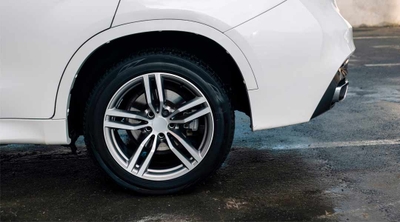What is the future of electric cars?
3 min read
While electric cars will not be replacing gas-powered vehicles in the near future, the process of internal combustion engines becoming obsolete has already begun according to Kiplinger. Many things need to change to fulfill electric car future predictions. Battery production and infrastructure for charging electric vehicles will need to grow significantly. Automakers will have to convert to an all-electric platform. And — perhaps the most important factor — consumers will need to embrace electric vehicles and demand those changes happen.
Electric vehicle growth projections
According to The International Energy Agency (IEA), in 2021, sales of electric vehicles nearly doubled 2020 sales to 6.6 million (a sales share of nearly 9%) bringing the number of electronic cars on the road to 16.5 million. Hybrid electric vehicles, or HEVs, don’t count toward that total because they can run on gasoline engines and electric power.
That may not sound like much, but the pace is ramping up, according to industry analysts. Our friends at True Car, a digital car sales marketplace, predict that there will be more models than ever, with more than 100 EV models likely to be available by the end of 2024. According to Protocol, the ratio of electric cars to gas cars will gradually increase too:
- By 2025, electric vehicle sales could comprise up to 20% of new car sales
- By 2030, electric vehicle sales could reach 40% of new car sales
- By 2040, electric vehicle sales could account for nearly all new car sales
The future of electric cars relies on many factors
Complex economic and societal issues influence how fast and effectively the United States can adopt electric vehicles. EVs will need to become a priority for automakers, legislators, and most consumers before we can expect them to replace gas-powered vehicles.
Fleet turnover
Fleet turnover refers to how quickly new vehicles replace the vehicles on the road. Because modern gas cars are more reliable and last longer than ever, it will take longer for future EVs to replace them. Other factors impacting fleet turnover include urban transportation planning and ride-sharing services.
Auto manufacturer conversions
Automakers are working on converting their offerings to all-electric vehicles, but their timetables for conversion differ. Some have committed to ending gasoline car sales by 2035; others may take until 2045-2050 to get there unless required by law.
Legislation
Many states have passed laws or had governors sign executive orders banning the sale of new gasoline passenger cars in their states by 2035. If this happens nationally, most passenger cars on the road by 2050 could be electric.
Infrastructure
If more electric cars are on the road, we’ll need the infrastructure to charge them. Legislators have passed laws to begin the work of installing chargers across the country, which will take many years to complete.
Consumer influence on the future of electric cars
The projected exponential growth in electric vehicle adoption has a few more hurdles to overcome with consumers. Some of those hurdles include the cost of ownership, driving habits, and the anxiety drivers have over how far they can drive on a charge.
Electric vehicle costs
Although the total cost of ownership for an electric car is lower than a gasoline car, the purchase price for an electric vehicle in 2021 was about $10,000 higher than average for all cars. Installing a home EV charger, replacing an electric car battery, and even insuring an EV can be expensive. Ultimately, electric vehicle adoption will increase when the cost of purchasing and maintaining EVs is on par with gasoline cars.
Driving habits
As more companies and workers embrace remote work, future driving habits and car purchases could be affected. People driving less may be less likely to replace an older vehicle and invest in an electric option.
Range anxiety
Range anxiety is the term coined for people concerned about whether an electric vehicle will run out of battery power and leave them stranded. This fear could lessen as more charging stations become available. Also, these fears will diminish as batteries become increasingly more powerful and people realize that they’re often not driving enough to make range an issue. If the industry can address these challenges quickly and decisively, the electric vehicle adoption rate could grow faster than experts predict. Learn more about buying an electric car.




